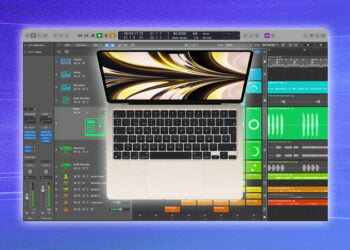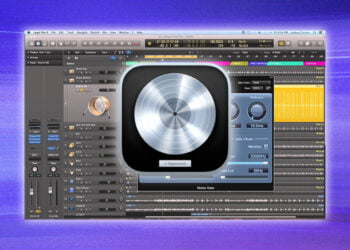The sustain pedal, also known as a damper pedal, is an important tool for creating music in Logic Pro X.
It allows musicians to create realistic performances of real instruments and enables them to add a wide range of expression to their compositions.
Editing sustain pedal settings can be a complex process, and the options available in Logic Pro X are vast.
To help you get the most out of your sustain pedal and make the most of Logic Pro X, this article will guide you through the process of editing sustain pedal settings in Logic Pro X.
We will explore the different ways to modify the sustain pedal to create the desired effect and discuss how to use the editing tools available in Logic Pro X to make the most of the sustain pedal.
Additionally, we will show you how to create more expressive music with your sustain pedal and provide tips for creating more intricate soundscapes.
Launch the Logic Pro X software on your computer
To begin, launch the Logic Pro X software on your computer.
Once the software is running, you can begin to edit the sustain pedal in the software’s interface.
Before you get started, ensure that your MIDI device is properly connected to your computer via USB.
Once this is done, you will be ready to begin editing the sustain pedal in Logic Pro X.
Open the project that you would like to edit the sustain pedal
Once you have launched Logic Pro X, open the project that you would like to edit the sustain pedal for.
This can be done by navigating to the File tab at the top of the screen and selecting the Open Project option.
Now, select the project you want to edit and open it to begin the process.
It is important to note that the sustain pedal will be different in each project you open, so be sure to make the necessary changes to each one accordingly.
Select the MIDI region and locate the piano roll view
Once you have selected the MIDI region that you wish to edit, you can locate the piano roll view.
This will allow you to see the notes that are being played in the region and edit them accordingly.
You can edit the sustain pedal by simply selecting the notes with the sustain pedal and changing the velocity value.
This will allow you to adjust the volume and length of the note.
Additionally, you can use the sustain pedal tool to adjust the length of the note as well.
Identify the sustain pedal setting and double click on the area
To begin, open up Logic Pro X on your device.
With the program open, go to the top right corner and click on the “Key Commands” button.
Once you’ve clicked on this button, you will be presented with the “Key Commands” window.
In this window, navigate to the “Controllers” tab, which is located at the top of the window.
Within the “Controllers” tab, you will be able to identify the sustain pedal setting and double click on the area to open up the “Sustain” window.
From here, you can make the necessary edits to the sustain pedal setting.
Adjust the sustain pedal setting to the desired level
Once you have chosen the desired level of sustain, you can make the adjustment by adjusting the sustain pedal setting.
To do this, open the plug-in window for the instrument track and click on the Sustain Pedal setting.
You can then adjust the setting to the desired level, which will determine the amount of time it takes for the notes to decay after you release the pedal.
This setting can be adjusted at any time, allowing you to experiment with different levels of sustain to achieve the desired effect.
Preview the audio to confirm the setting
Once you have adjusted the sustain pedal settings, it is important to preview your audio to ensure that the settings are correct and that it is working properly.
To do this, ensure that your sustain pedal is connected and then hit the Play button in Logic Pro X.
You should be able to hear the effect of the sustain pedal in the audio.
If the settings are correct, you can proceed to the next step.
If there are any issues, you should adjust the settings until you are satisfied with the results.
Save the project when you have completed the editing
Once the editing of the sustain pedal project is complete, it is highly recommended to save your progress.
This ensures that all changes are secure and that the project can be reopened and continued at any point in the future.
To save the project, simply select File > Save from the menu bar, or use the shortcut Command + S.
This will save the project and ensure that all changes are stored correctly.
Export the project when you are satisfied with the results
After you have completed your edits and are satisfied with the results, it is time to export your project.
Exporting the project will render all of your edits into a single audio file.
To do this, go to the File menu and select “Export > All Tracks as Audio Files…”.
Select the desired file format, such as .wav or .mp3, and click “Export”.
This will save your project to the desired location.
Conclusion
In conclusion, editing sustain pedal in Logic Pro X is a simple but powerful way to add depth and texture to your tracks.
With a few clicks of the mouse, you can alter the sustain pedal’s settings to create intricate and interesting soundscapes.
Take some time to experiment and find the perfect balance for your sound design.
With a bit of practice, you’ll be able to transform your music into a truly unique experience.






















